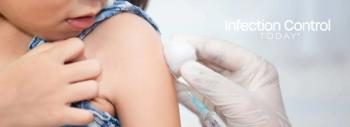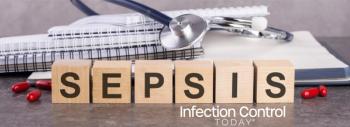
Sharps Safety Device Program Meets with Success
Sharps Safety Device Program Meets with Success
By Virginia Slocum, RN, CIC
Issue: Occupational exposure to hepatitis B and C, viruses,HIV, and other bloodborne pathogens poses a significant risk to HCWs, especiallyto those with involvement in direct patient care. Implementation of a sharpssafety device program will reduce the risk of occupational exposure tobloodborne pathogens.
In 1997 the administration of Shore Health System determined it would providesafer environment for our employees related to needlestick injuries, and effortswould made to reduce their exposure to bloodborne pathogens.
We formed a task force that included representation from nursing, laboratory,professional practice, employee health, pharmacy, materials management, andinfection control. This Healthcare Worker Safety Task Force was comprised ofmanagement-level employees so that as a plan of action unfolded, decision-makingcould be accomplished easily.
The first step for the task force was to review information on the risk ofexposure by various sharps devices, the actual dollar and emotional cost to theexposed HCW, and the financial impact on our healthcare system. Next we reviewedthe historical data for employee exposure for each of the two hospitals prior tothe recent affiliation. The hospital data revealed that IV catheters,syringe/needle devices, butterfly needles, and blood-drawing devices caused thehighest number and risk of blood exposures to employees in our system.
The employee health department provided the task force with the costs relatedto a single blood exposure. Two sets of costs were considered; one for the basicexposure without complications, and one for the employee who received ahigh-risk exposure resulting in multiple testing, prophylaxis, treatment fordeveloping medical conditions, and the potential for life- threatening illness.
The materials management director reviewed the inventory records to establishthe number of each of the four categories of devices that were used at eachhospital and the cost of these items during the previous year. He thendetermined the additional cost of replacing each of these devices with a safetydevice. His analysis revealed that we would need $100,000 in additional fundingto implement each of the four safety sharps devices.
A proposal for the implementation of safety sharps devices was preparedutilizing all of the data that was available. The proposal recommended at leastone class of safety sharps devices be made available during the 1997-98 budgetyear and the remaining three implemented during the next fiscal year. InNovember 1997, the proposal was presented to the senior leadership of ShoreHealth System and was approved for the required $100,000 in additional fundingwith a limitation related to contract purchasing. Senior management requiredthat we evaluate products that were available under our contract purchasing. Ifa contract device was determined by the Healthcare Worker Safety Task Force andthe Products Standards Committee to be unsatisfactory, we were required tosubmit that information to members of senior management in writing so that theywould make a decision related to any additional funding. In an environment oftightening budgets, this was a more than generous opportunity to establish asafer environment for our employees.
Education played a major role in implementing the sharps safety program. Weprovided information to the employees through meeting minutes, hospitalnewsletters, and posters alerting them to the progress of the sharps safetyprogram. An additional step in education was to share our plans for employeesafety with the public through an article in the local newspaper explaining therisks and measures for prevention.
The IV catheter was the first device to be evaluated and purchased in thefirst six months of the proposed two-year period. Each of the other threedevices were evaluated and purchased during an 18 months period. Educationplayed a major role in the successful evaluation and implementation of thesafety devices. Company representatives and Professional Practice in-servicedeach device throughout the system reaching all shifts of employees includingweekends. Rejection of the IV catheter did occur initially on a number of thepatient care units but reeducation and one on one training did overcome theconcerns of the employees which were primarily work practice issues. All fourdevices remain in use with the addition of multiple other safety devices todate.
We have a six-member task force with ad hoc representation from staff-levelemployees who either recommend or will use and evaluate a new or technologicallyimproved safety sharps device. The task force reviews the employee health sharpsexposure report to determine the need for new or additional safety sharpsdevices and recommend education and training. One of the most successfuleducation methods has been to present a products fair, inviting vendors todisplay their safety products and allowing employees to have hands-onopportunities to try new products. Employees are actively participating in theSharps Safety Prevention Program and they are voluntarily recommending safetydevices. The attitude of members of the products standards committee inapproving products for purchase has changed from a primary budget/cost emphasisto that of employee safety. Shore Health System has experienced a gradualdecrease in sharps exposure incidents since the implementation of the sharpssafety program. The IV catheter rate and the IV butterfly rate have decreased tozero during the first two quarters of 2001. The rate for syringe/needle deviceexposures has continued to be a concern; therefore, we are evaluating a newsyringe that provides automatic needle retraction while still in the patient.
Virginia Slocum is manager of infection control at Shore Health System inEaston, MD.
Newsletter
Stay prepared and protected with Infection Control Today's newsletter, delivering essential updates, best practices, and expert insights for infection preventionists.






